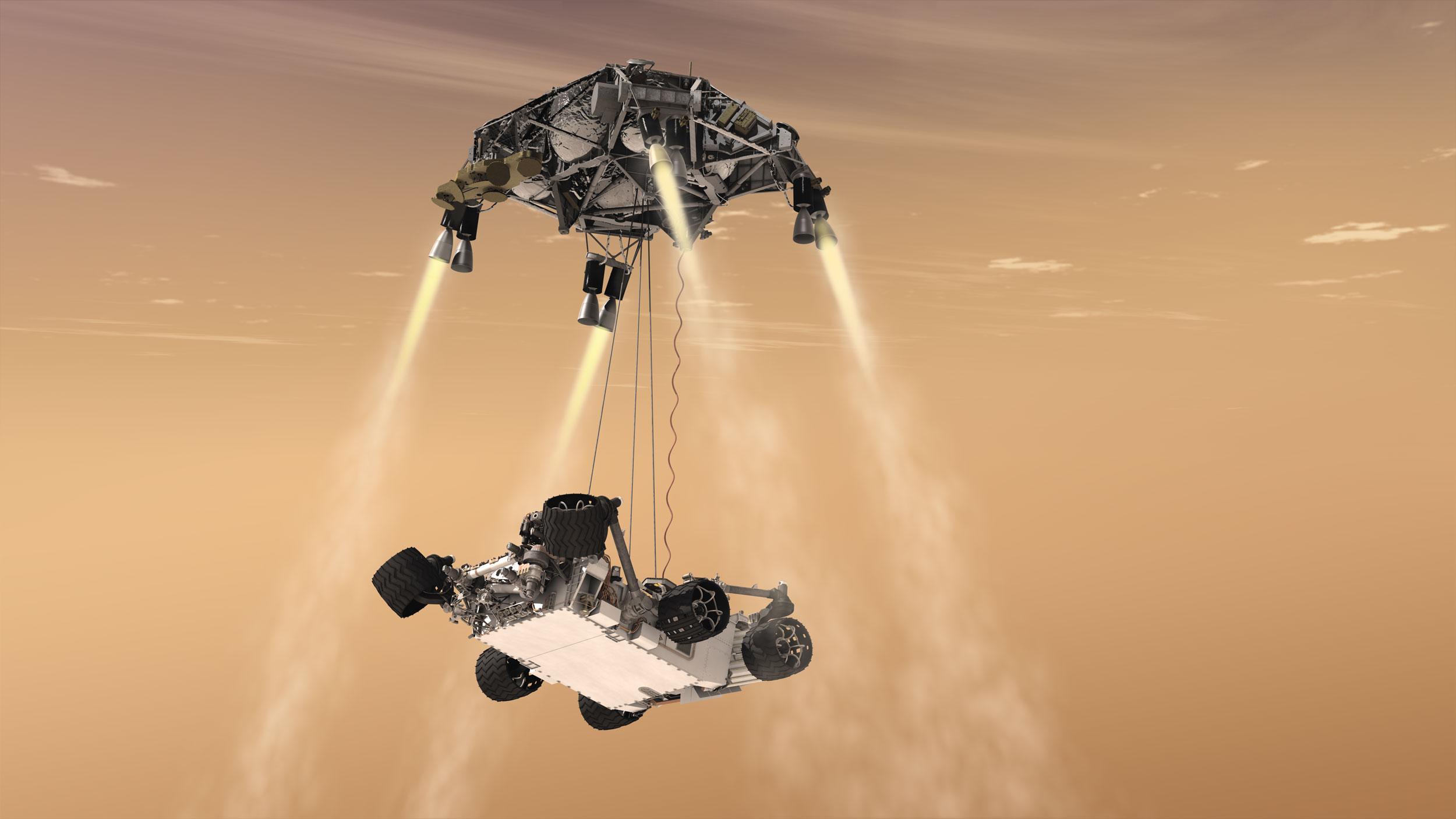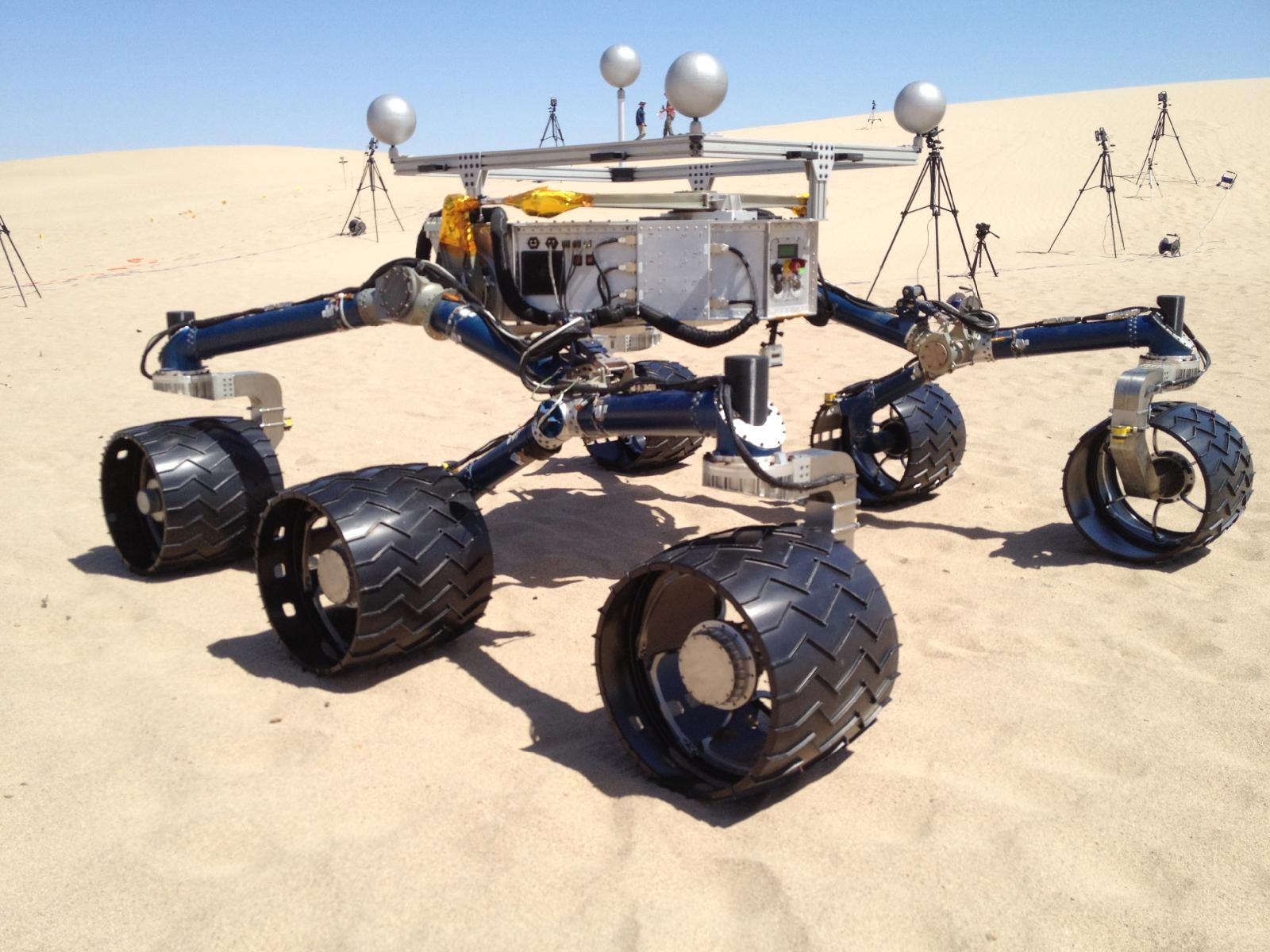
Daring Mars Rover Landing Has High Stakes for NASA

Day by day, hour by hour, the tension is building. NASA’s mega-mission to Mars and delivery of the Curiosity rover could be a smashing success … or just smashing.
The Mars Science Laboratory’s 1-ton Curiosity rover is factory-equipped with science gear to delve into whether Mars ever was — or might be today — an eco-friendly setting able to sustain microbial life.
A seven-minute, terrorizing plunge through the planet’s atmosphere awaits the spacecraft. MSL’s Curiosity rover is scheduled to touch down at Gale Crater at 10:30 p.m. PDT on Aug. 5 (1:30 a.m. EDT, 0530 GMT, Aug. 6).
At that moment, NASA’s Mars Reconnaissance Orbiter is to attempt imaging the final seconds of the robot's death-defying high dive.
"We will indeed be imaging the spot MSL is predicted to be about 60 seconds prior to landing, but the odds of capturing it are estimated at 60 percent," said Alfred McEwen at the University of Arizona in Tucson. He is principal investigator of the orbiter's super-powerful High Resolution Imaging Science Experiment (HiRISE). [Mars Rover Curiosity's Daring Landing in Pictures]
Opening the way forward
"The chips are really down on this one," said Robert Zubrin, president of the Mars Society, which is dedicated to the human exploration and settlement of Mars.
Get the Space.com Newsletter
Breaking space news, the latest updates on rocket launches, skywatching events and more!
"If it succeeds, it will be far and away the best Mars mission ever. It will make extraordinary scientific discoveries and fire the public's imagination with the vision of exploring another world," he told SPACE.com.
Zubrin said a successful touchdown of the Curiosity rover will display a never-tried-before landing system — a Sky Crane on Mars — capable of delivering 1,980 pounds (900 kilograms) to the Martian surface, which would be enough to accomplish the Mars sample return and other extraordinary missions.
"So it will not only point the way forward, it will open the way forward," Zubrin said.
Do or die
On the other hand, if the Mars rover Curiosity pancakes into the Red Planet, "it could take the entire Mars program down with it," Zubrin said. "With the 2016 and 2018 missions canceled, the program is in chaos, and as a result of government overspending outside of NASA, a drive for fiscal austerity is on the way."
Were the rover to fail, those who wished to get the 2016 and 2018 missions restored or propose new ones in their place wouldn’t stand a chance, Zubrin predicted. The failure, whatever its cause, would be denounced as obvious after the fact.
Zubrin said detractors would argue: "You didn't anticipate that? How could you not have foreseen that? We gave you $2 billion for your mission and you totally blew it. Don’t even think of asking us for any more."
As a bottom line, Zubrin said, "It is victory or death."
Gale Crater chemistry
The MSL mobile robot follows NASA's Phoenix spacecraft, which made a legged landing in May 2008 and investigated the northern polar region of the Red Planet.
Phoenix conducted science experiments for five months as part of NASA’s search for habitable zones in our solar system. Among its discoveries was the presence of water ice a few inches below the surface. In the Martian soil it also found perchlorate, which, when concentrated, lowers the freezing point of water below Martian temperatures; moreover, some microorganisms obtain energy from the substance.
"The Phoenix team keenly awaits the detailed analysis of the soil mineralogy and chemistry at Gale Crater near the equator to compare with the polar values that Phoenix found in close contact to an ice layer," said Peter Smith, leader of that mission at the University of Arizona in Tucson.
"Important questions on the history of volatiles and the fate of organics are yet to be answered sufficiently. …Curiosity has the ability to make major contributions," Smith told SPACE.com. "Curiosity represents the hard work of hundreds of dedicated individuals and builds on the return from all previous missions." [How Mars Rover Curiosity Will Explore Mars (Video)]

Life on Mars: Cousin or alien?
While Curiosity is not a search-for-life mission, but rather a wheeled exploration for habitable environments, its work on Mars will help set the stage for future life-detection quests — and could move closer the day of the first footfall on the Red Planet.
"I feel like I’m kind of a minor stockholder in a much larger enterprise," said Kim Stanley Robinson, an American science fiction writer acclaimed for his award-winning trilogy "Red Mars," "Green Mars" and "Blue Mars."
Robinson spoke at Spacefest IV in June in Tucson, offering a look at the future of Mars exploration — but also waving a warning flag.
"It seems to me that we should not be using the analogy of Mars as the frontier or Wild West," Robinson said. He believes a complicated decision tree awaits those engaged in future Mars surveillance and the potential for finding of life there.
"If we find life on Mars, either cousin or alien, it will still be one of the major findings in scientific history. And we’ll have to consider how to study it …what kind of protocols we’ll need to set up," Robinson said.
"It’s going to be an interesting problem," he told his Spacefest IV audience. "Can we satisfy ourselves as to whether there’s life on Mars — or not — without also contaminating it to the point where it becomes confusing to see whether that life we’ve found there is indigenous or introduced by us?"
The hunt is going to be strange. It may be that life on Mars is hunkered down deep and hard to find, Robinson said.
Can humans and Martian microbes co-inhabit? Robinson envisioned subterranean Mars life blissfully doing its thing while humans do their thing topside. "I think the most danger would be wrecking Mars life," Robinson said.
Leonard David has been reporting on the space industry for more than five decades. He is a winner of last year's National Space Club Press Award and a past editor-in-chief of the National Space Society's Ad Astra and Space World magazines. He has written for SPACE.com since 1999.
Join our Space Forums to keep talking space on the latest missions, night sky and more! And if you have a news tip, correction or comment, let us know at: community@space.com.

Leonard David is an award-winning space journalist who has been reporting on space activities for more than 50 years. Currently writing as Space.com's Space Insider Columnist among his other projects, Leonard has authored numerous books on space exploration, Mars missions and more, with his latest being "Moon Rush: The New Space Race" published in 2019 by National Geographic. He also wrote "Mars: Our Future on the Red Planet" released in 2016 by National Geographic. Leonard has served as a correspondent for SpaceNews, Scientific American and Aerospace America for the AIAA. He has received many awards, including the first Ordway Award for Sustained Excellence in Spaceflight History in 2015 at the AAS Wernher von Braun Memorial Symposium. You can find out Leonard's latest project at his website and on Twitter.









